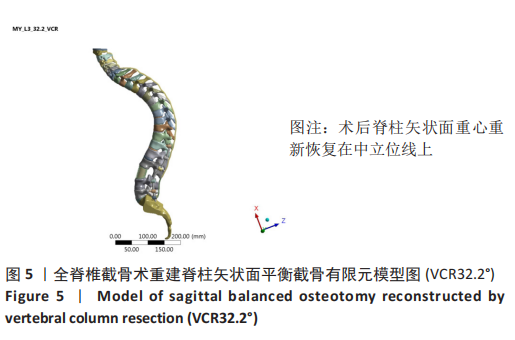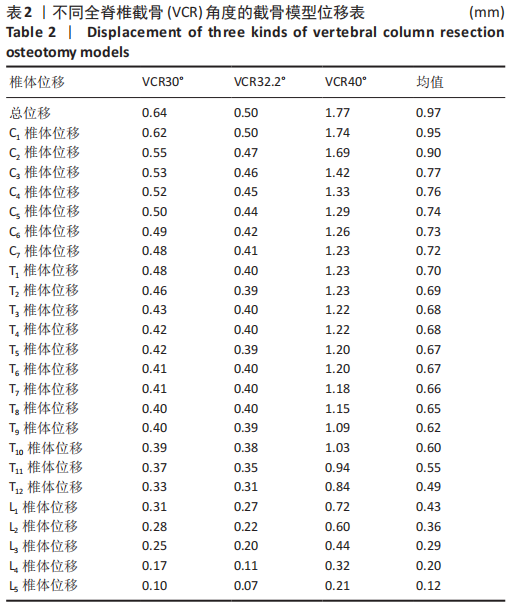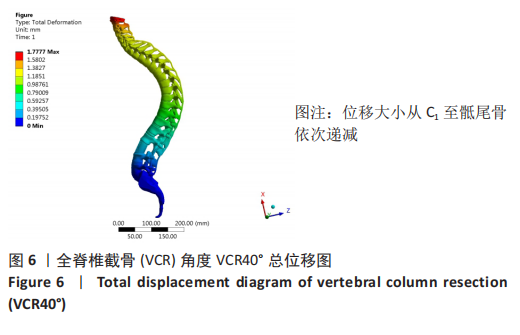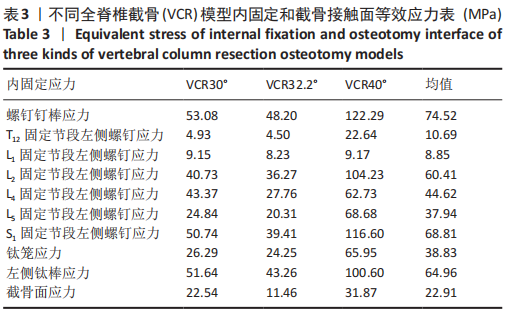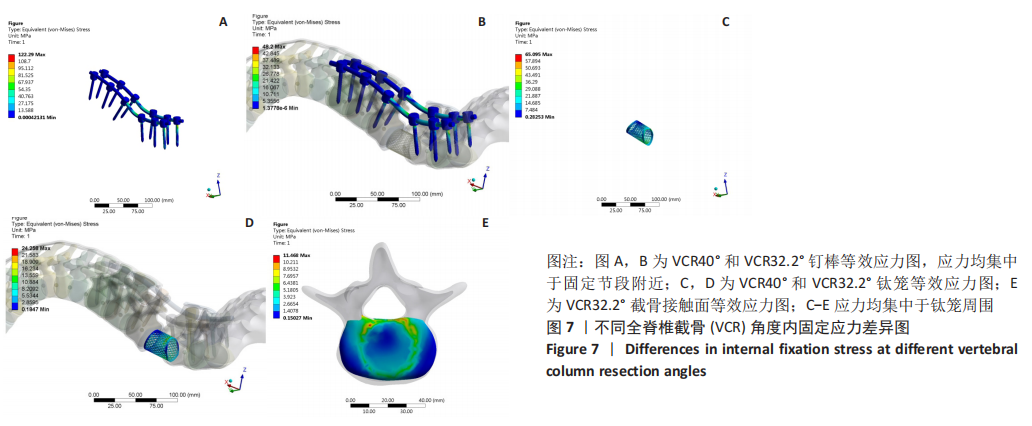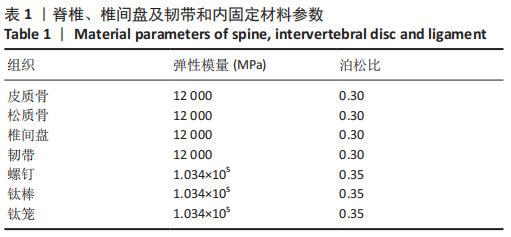中国组织工程研究 ›› 2021, Vol. 25 ›› Issue (33): 5259-5264.doi: 10.12307/2021.311
• 数字化骨科 digital orthopedics • 上一篇 下一篇
全脊椎截骨重建强直性脊柱后凸矢状面平衡的有限元分析
谢 江1,郭惠丽2,李 辉3,代 杰1,朱 旭1
- 1新疆医科大学第六附属医院脊柱外一科,新疆维吾尔自治区乌鲁木齐市 830001; 2乌鲁木齐市疾控中心,新疆维吾尔自治区乌鲁木齐市 830000; 3临汾市人民医院心脏大血管外科,山西省临汾市 041000
Finite element analysis of reconstruction of sagittal balance in ankylosing kyphosis with vertebral column resection
Xie Jiang1, Guo Huili2, Li Hui3, Dai Jie1, Zhu Xu1
- 1First Department of Spinal Surgery, The Sixth Affiliated Hospital of Xinjiang Medical University, Urumqi 830001, Xinjiang Uygur Autonomous Region, China; 2Urumqi Center for Disease Control and Prevention, Urumqi 830000, Xinjiang Uygur Autonomous Region, China; 3Department of Cardiovascular Surgery, Linfen People’s Hospital, Linfen 041000, Shanxi Province, China
摘要:
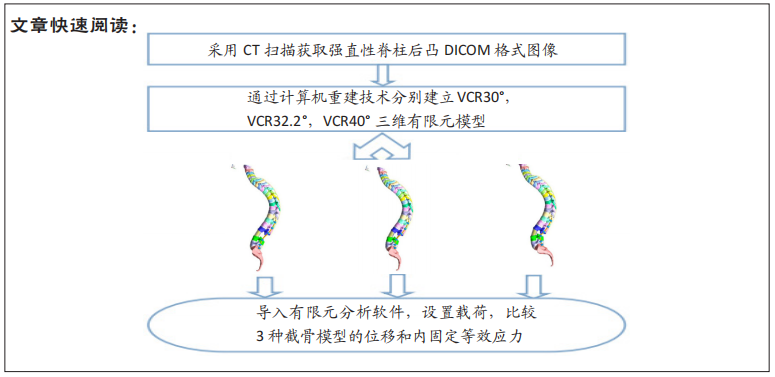
文题释义:
全脊椎截骨(vertebral column resection,VCR):后路全脊椎截骨技术已在国内外广泛应用于严重脊柱侧后凸畸形的外科矫形。VCR技术的核心操作是后路对单个或多个椎体及其上下相邻椎间盘的完整切除,通过单次手术即可获得较高的侧凸和后凸矫正率,并且对术前有脊髓压迫症状的患者在截骨矫形的同时可行脊髓充分减压。
强直性脊柱后凸:僵硬性脊柱畸形的一种,病因为强直性脊柱炎,根据畸形位置的不同可分为四型,治疗主要手段是手术矫形,手术目的是恢复前视和脊柱矢状面上的平衡。
背景:过去强直性脊柱后凸矫形往往注重局部畸形的矫正,忽略对于矢状面平衡的重建。
目的:应用计算机辅助软件建立强直性脊柱炎后凸三维有限元模型,基于肺门-髋轴法重建脊柱矢状面平衡,设计个性化手术截骨方案,并模拟全脊椎截骨手术操作,计算分析其生物力学特性,并与两种未重建脊柱矢状面平衡模型进行对比。
方法:收集来自新疆医科大学第六附属医院1例强直性脊柱炎后凸住院患者的CT数据,根据301分型确定后凸畸形为ⅢA型,将CT数据导入计算机建模软件中,建立强直性脊柱后凸畸形三维有限元模型。设计3种不同全脊椎截骨(VCR)手术方案的模型,分别为VCR30°,VCR32.2°和VCR40°,其中VCR32.2°使用肺门-髋轴测量方法测量L3预截骨角度为32.2°,另外构建2个未重建脊柱矢状面平衡模型,其中VCR30°设置为截骨角度为30°,VCR40°设置截骨角度为40°,在构建完成的3个模型上模拟全脊椎截骨术进行截骨,并对截骨矫形后3个模型的脊柱位移、钉棒系统、钛笼和截骨面进行有限元计算。
结果与结论:①总位移和24个椎体位移大小排序如下:VCR40° > VCR30° > VCR32.2°,VCR40°明显高于VCR32.2°,VCR30°和VCR32.2°两者由于截骨角度差异小,位移差距不显著;椎弓根螺钉、钛棒、钛笼以及截骨接触面的应力分布趋势;②不论是钉棒应力,还是钛笼应力,VCR40°都要高于其他2个模型和平均值,并且差异明显,VCR32.3°在3种模型中应力最小,也低于平均值,并且各节段等效应力分布均匀,没有出现应力集中的现象;③结果证实,基于肺门-髋轴法重建脊柱矢状面平衡能够增加术后脊柱稳定性,且内固定应力分布更低,是一种合理、科学的手术方案设计。
中国组织工程研究杂志出版内容重点:人工关节;骨植入物;脊柱;骨折;内固定;数字化骨科;组织工程
中图分类号:
